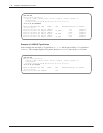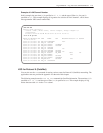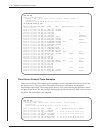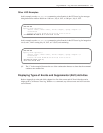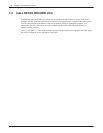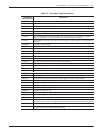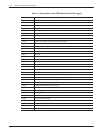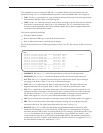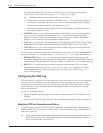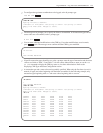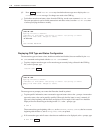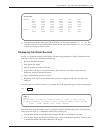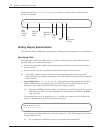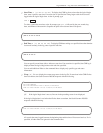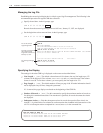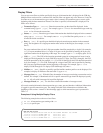
7-26
Installation and Maintenance
V
olume
Octel Overture 200/300 Serenade 3.0
PB60014–01
For
digital networking entries, this column contains the actual voice length of the message for
NTMSGD
and
NTMSGN
entries and is always
0:00.0
for an
NTOUTC
entry
.
.
Consider the following about entries in the
DURATN
column:
-
If the message-server time is modified in UPDA
TE (MODIFY DATE),
the durations logged for
calls in process at that time will not be correct. When the time is changed because of daylight
savings time, the duration logged for calls in process is correct.
-
The maximum duration that can be logged is 24 hours. For example, a call that lasts 25 hours
would show a duration of 1 hour
.
-
MAILBOX.
The
MAILBOX
column lists the number of the mailbox involved for each transaction
type (
XACTIN
). For example, the mailbox listed for a
LOGON
transaction type is the mailbox
entered. The mailbox listed for a network transaction type is the creator
’
s mailbox. The mailbox
listed for a
CALPA
transaction type is the mailbox originally called.
-
COS.
The
COS
column shows the number of the incoming port/trunk group, which is logged only for
integrated call records. Refer to the Call Detail Records, Display Filters section, in this chapter
.
-
CALLER.
In the
CALLER
column, the caller
’
s mailbox number is logged only for integrated call
records. Refer to the Display Filters section.
The following two columns are displayed by expanding the screen width to 132. When defining the CDR
transactions within the
LOG
command, define
L [LEN]
to be 132 (
L 132)
to display these columns:
- DESTINA
TION.
The
DESTINATION
column lists the numbers entered for pager outcalls and
fax-delivery attempts. The entries represent the location names as defined in the LOCA
TION T
able for
network outcalls or the identification string of the sending fax machine for a
FAXRCV
transaction type.
- R
TE.
The
RTE
column lists the route numbers for network outcall attempts. The
RTE
column
represents the voice-port allocation for
FAXSND
,
FAXRCV
, and
FAXEDT
(logged by fax channel
only) transaction types. For digital networking entries, the entry in this column is always
1 for a
NTOUTC
transaction type.
Configuring the CDR Log
Until
the CDR log is configured to save the transaction records, no records are saved. T
o save transaction
records, use the
LOG
command to save the combinations of transaction types and status values. The
transaction type indicates the specific type of calling event to be logged (for example, call to a mailbox,
call to a personal assistant). The status indicates what happened when a call was placed or a message
delivery was attempted.
Use the
LOG
command as follows:
-
Modify the specific transaction-type and status-value combinations used to save transactions in the
CDR log.
-
Display specific transaction-type and status-value combinations established, as well as the entire log.
Modifying CDR for Transaction and Status
To
begin recording call detail records, the desired combinations of transaction types and status options
must be enabled. All transaction types and status values can be set, or specific types of transactions and
status values can be set.
.
Setting type and status combinations only determines the records that should actually be saved in
the log. Some type and status combinations might not be valid, but setting them has no ef
fect on
the log file, because they would not occur
.



